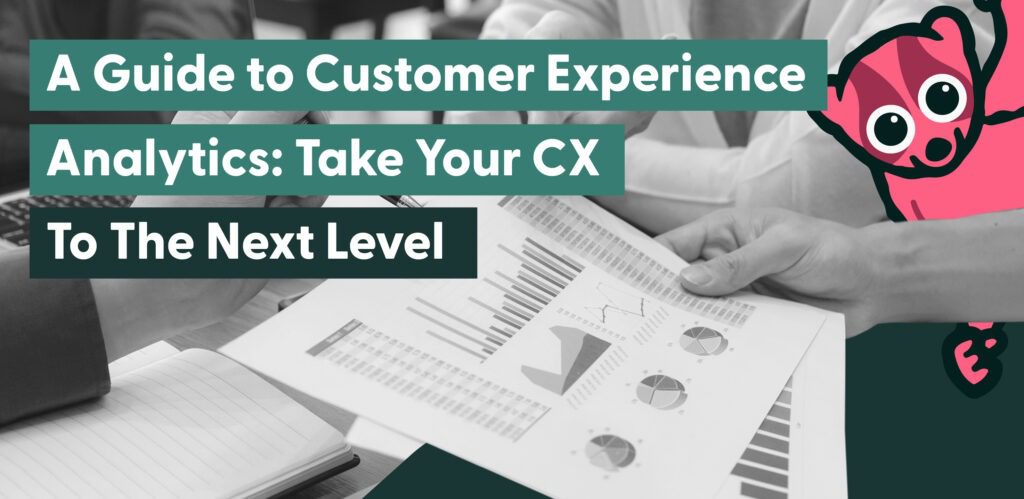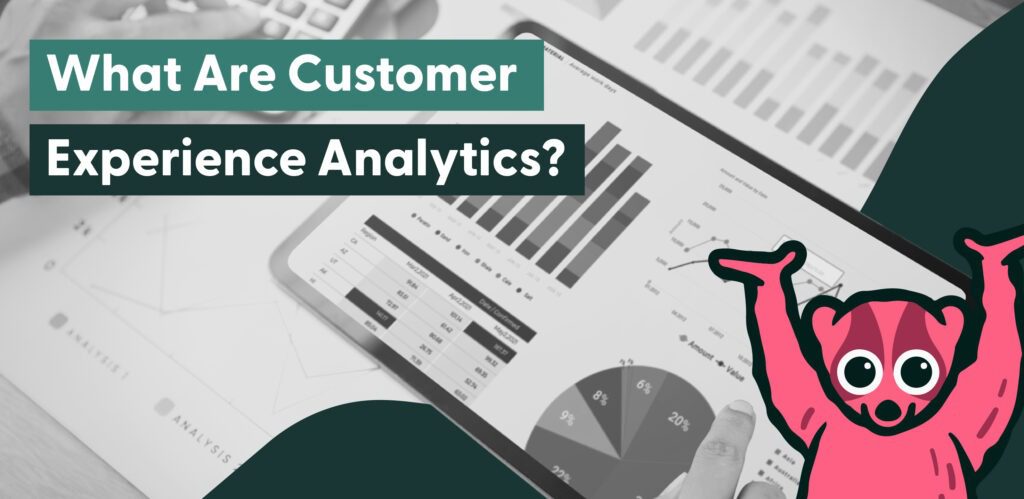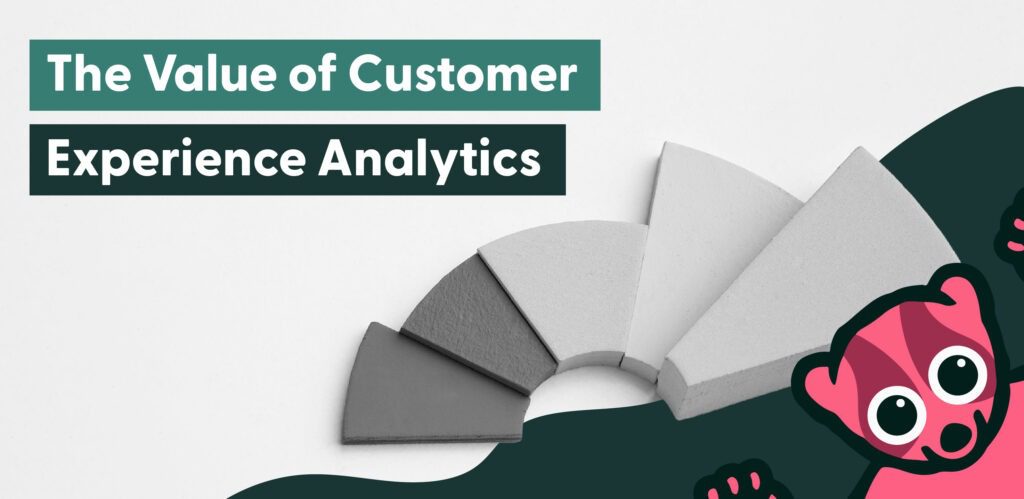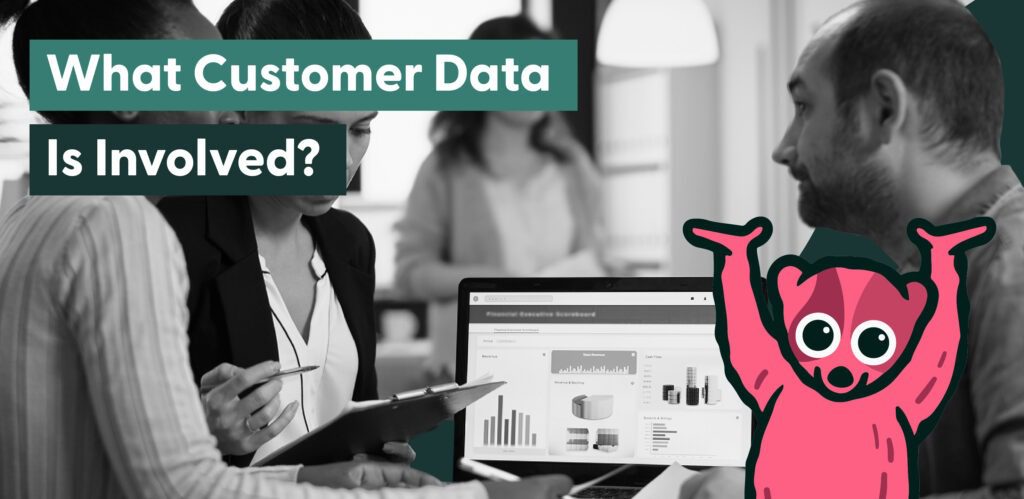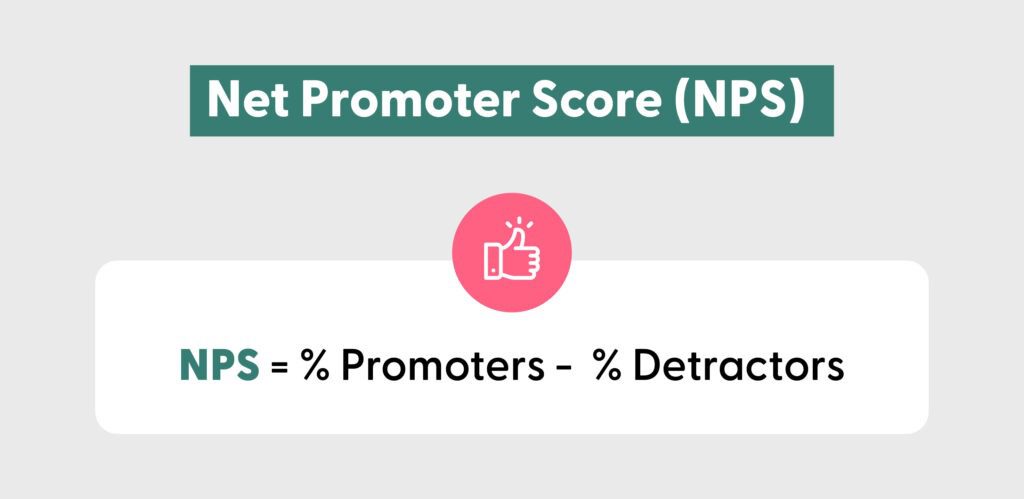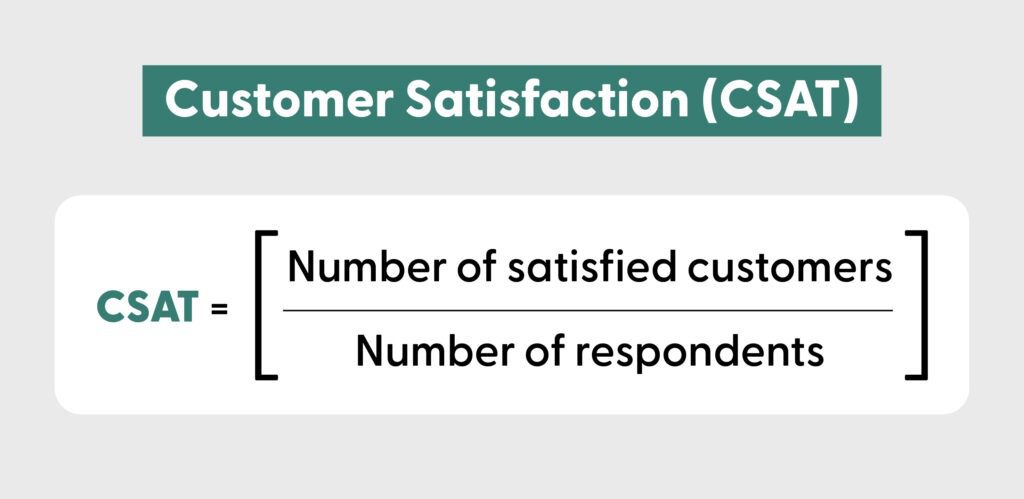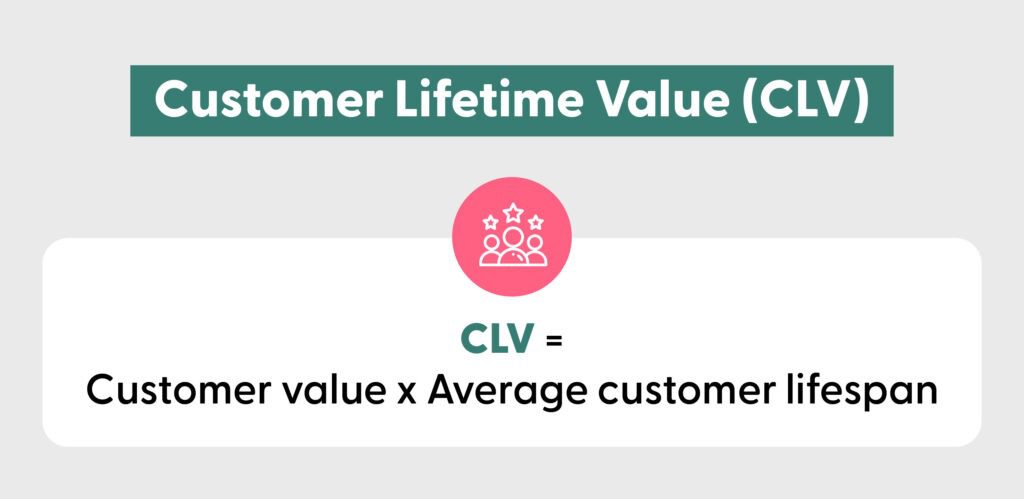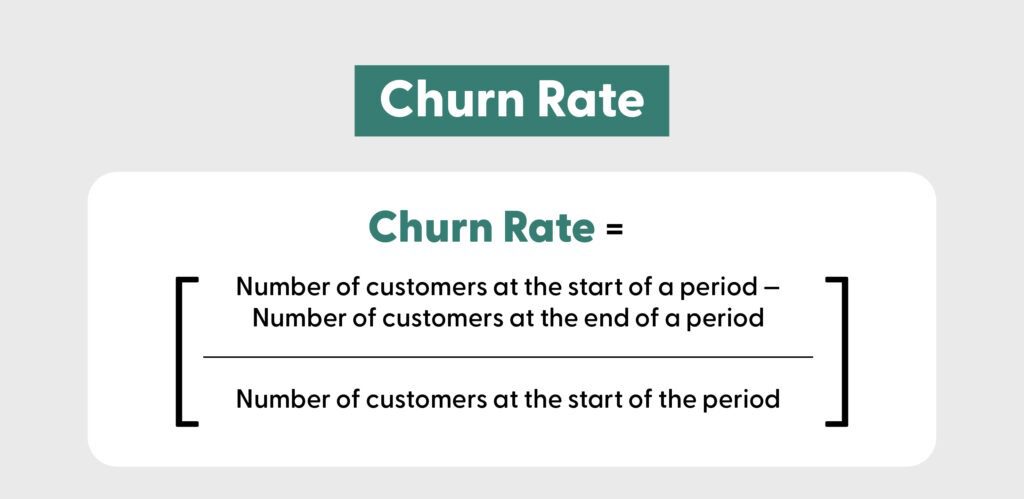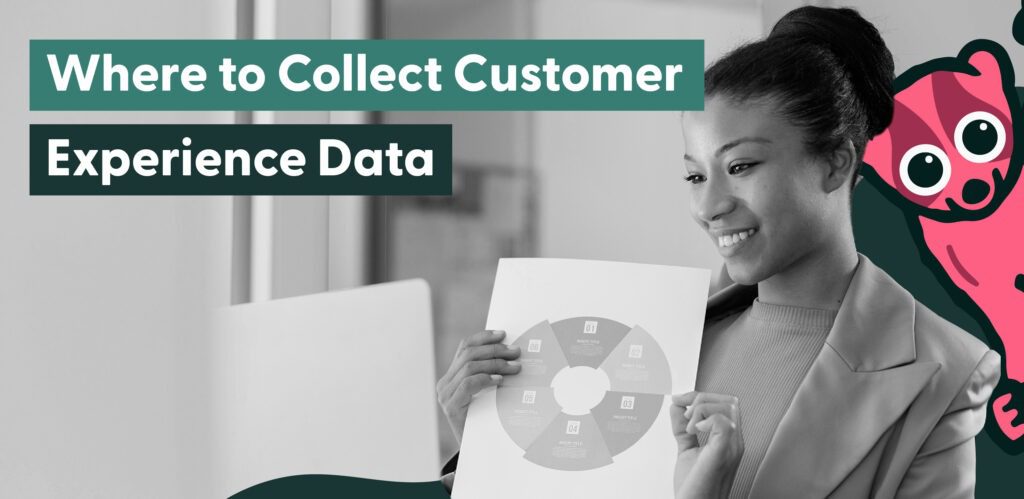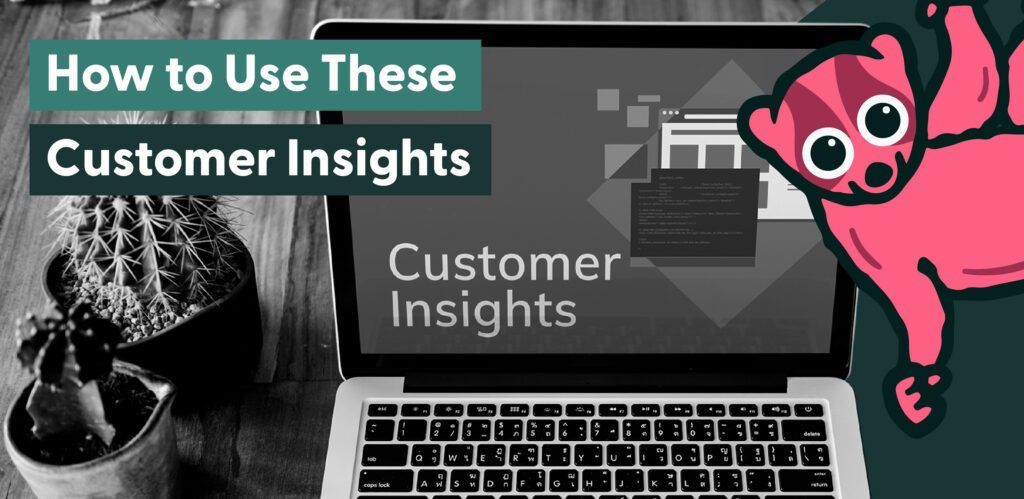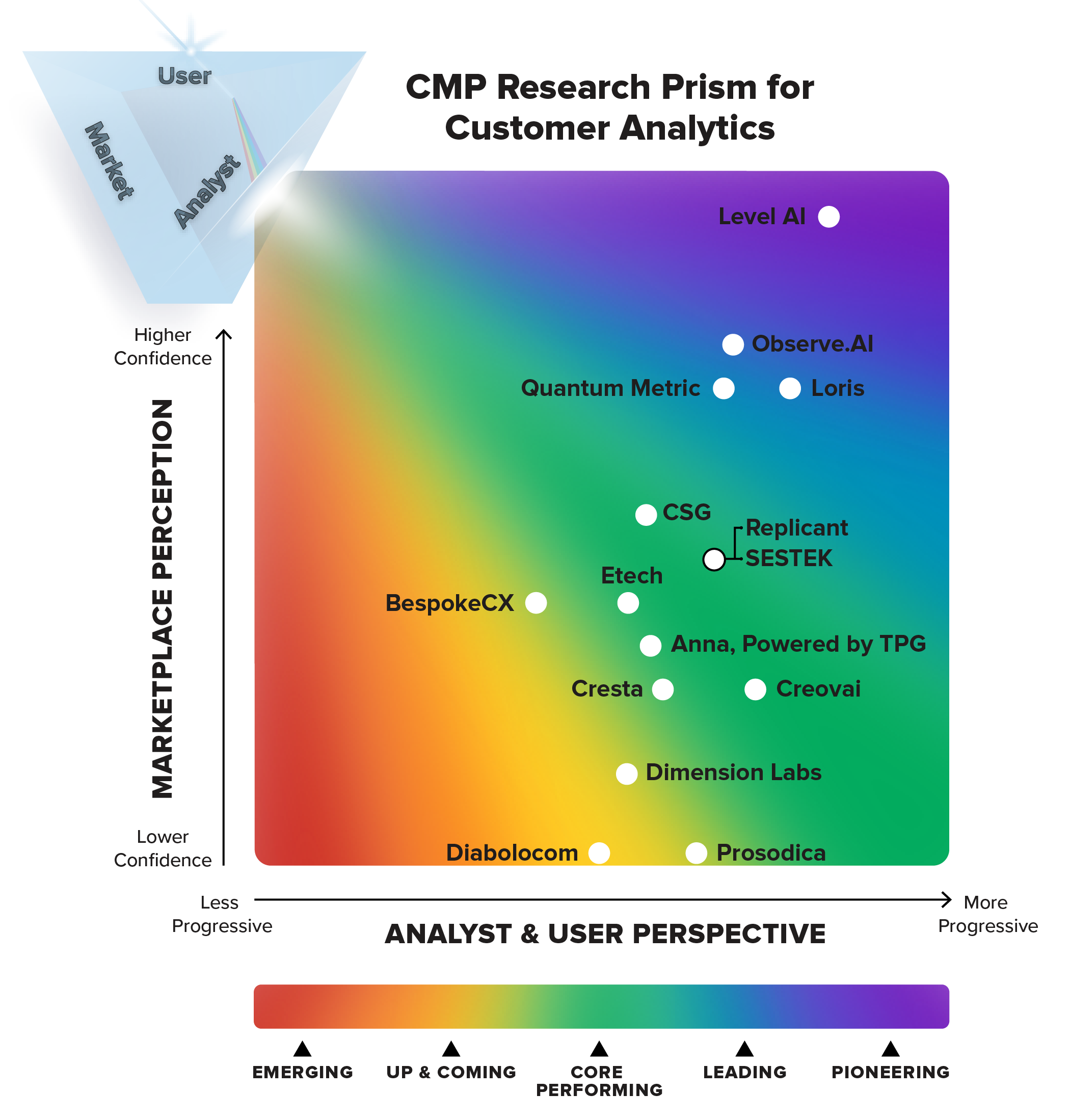Your customer experience (CX) is everything. If your customers have a good experience with your brand, you drive customer loyalty and retention. More than 70% of consumers say a good experience is vital in influencing their loyalty to a brand.
If they have a bad experience, you’ll have higher customer churn rates. In fact, 51% of customers will never do business with a company again after just one poor experience. This means you’ll have to spend loads of money acquiring new customers constantly.
But how do you know if your customer experience is any good? The answer is through customer experience analytics.
In this article, we’ll guide you through what customer experience analytics are and how you can use them to take your CX to the next level.
What Are Customer Experience Analytics?
Customer experience analytics involves gathering and analyzing customer data to improve your CX. This data can come from multiple sources and can be used to improve your business.
Some important customer experience analytics include:
- Net promoter score (NPS).
- Customer satisfaction (CSAT) score.
- Customer lifetime value (CLV).
- Customer effort score (CES).
- Customer churn rate.
We’ll discuss these metrics in more detail later in this article.
The ultimate goal of collecting this data is to understand your customers’ needs, preferences, and experience with your product.
Customer experience analytics has many benefits, including:
✅ Increasing customer engagement.
✅ Improving customer loyalty.
✅ Maximizing revenue.
Customer experience analytics can help you:
✅ Better understand the customer journey.
✅ Take action on issues affecting CX.
What You Can Achieve with Customer Experience Analytics
There are several practical tasks that customer experience analytics can help you carry out:
✅ Improve your product: Knowing what aspects of your product are working (and which ones aren’t) helps you continuously develop and improve it to keep customers happy and engaged.
✅ Identify problems in the customer journey: If you know which stage in the customer journey you lose customers, then you can take steps to improve it. For example, if you find that very few customers convert after a free trial because they struggle to use your product, perhaps you need to provide more set-up assistance to them.
✅ Manage your CX team’s performance: Your customer experience analytics can help you measure your CX leaders’ performance. You can measure actions they take in response to customer insights against how they improve things like customer retention and loyalty.
The Types of Customer Data Involved
Let’s take a look in detail at each of the customer experience data types we mentioned earlier:
📈 Net promoter score (NPS)
A net promoter score (NPS) aims to collect customer feedback and measure their satisfaction and loyalty.
Typically, you’d send customers a survey asking how likely they are to recommend your product to friends and family.
Customers who give you a low score are known as detractors. Those who give you a higher rating are called promoters.
You can calculate your NPS by subtracting your percentage of promoters from the percentage of detractors.
You have more detractors than promoters if your net promoter score is negative. You need to take significant steps to improve your customer experience.
📈 Customer satisfaction (CSAT) score
Your customer satisfaction (CSAT) score is a metric that assesses the overall customer experience and their satisfaction with your product and your support team.
To calculate your CSAT score, you divide the number of satisfied customers by the number of customers you asked to score your product or experience:
You should measure your CSAT at different points of the customer journey to identify where customers may face issues.
For example, let’s say you are an eCommerce business, and customers express dissatisfaction during checkout. You’d need to investigate the cause of this, but you could need to provide more payment and delivery options.
➡️ Plot Twist: You Don’t Need Surveys
With a conversation intelligence platform like Loris, you don’t need to manually send out customer surveys and hope they will respond.
“Loris collects data from all your customer interactions across every channel and analyzes it so that you don’t have to rely on surveys to get customer data. This makes gathering customer data simple and removes the need for manual input.”
– Ronen Ben-Ari, Head of Product at Loris.
📈 Customer lifetime value (CLV)
Customer lifetime value (CLV) is how much average revenue you make from one person while they’re your customer.
This metric can help you understand customer retention and how profitable your product is. You can use it for financial projections and to make better decisions within your business.
To calculate your CLV, multiply your average customer value by their average lifespan:
A music technology company called Epidemic Sound increased its subscribers and used CLV to identify and focus its efforts on its most profitable customers. As a result, it saw the number of high-value customers grow by 80% in just four months.
📈 Customer effort score (CES)
Your customer effort score (CES) is how much effort your customers put into completing a task using your product. Or it could be the effort they put into contacting your support team if something isn’t working.
You can display a CES survey on your website or app after a customer has completed a certain action. These could ask your customers to rate their experience with your product so far.
This metric gives your CX team a better understanding of where customers may be experiencing issues with your product or interactions with your support team and what can be done to improve this.
To calculate your CES, you need to take the amount of positive or negative responses in your survey and divide it by the overall number of responses:
If the results of your CES survey found that 45% of customers complained about long wait times when calling your contact center, you could introduce live chat as a feature on your website to resolve complaints faster. In fact, 55% of customers prefer a self-service channel like chatbots compared to speaking to a contact center agent.
📈 Customer churn rate
Acquiring new customers costs far more than retaining existing ones. For example, the average customer acquisition cost (CAC) for the Financial Services industry is $644.
This is where measuring your churn rate comes in. Your churn rate is how many customers stop doing business with you over a period of time.
You can calculate your churn rate by subtracting the number of customers at the end of a period from the number of customers at the start of a period. You divide this by the number of customers you had at the start of the period:
Say you’re a subscription-based software company that provides data solutions. Your analysis shows you have a high churn rate because customers don’t realize value quickly enough after implementing your solution.
Your CX team could fix this by developing a comprehensive onboarding system that supports customers during initial setup. You can create a detailed onboarding process that includes training, assistance, and regular check-ins.
❌ Beware of Siloed Data
Siloed data is when different datasets are stored by different departments on varying systems.
For example, your marketing team may have a mailing list on their email management tool, and your sales team may have a customer relationship management (CRM) platform where they store leads. Your product development department may have a list of fixes they need to make to your product.
However, because this data is stored in so many different places, it can be difficult and time-consuming to gather the right data.
Also, because it’s stored inconsistently, merging all this data into one set becomes almost impossible.
Where to Collect Customer Experience Data
There are a few different places where you can gather customer data, including:
🌐 Your website
You can place CSAT and NPS surveys on your website as pop-ups to collect customer feedback while they’re on your site.
You can also use tools like Google Analytics and Adobe Analytics to track and analyze user behavior on your website.
For example, you could analyze which pages have high bounce rates and investigate why users leave.
You can improve these pages by enhancing your content, adjusting navigation, or speeding up load times.
💻 Your software or app
Your software or app is a great platform to collect CES data. Surveys can be shown as pop-ups after a customer completes a certain action.
Alternatively, you can use in-app analytics to track user interactions. For example, if people aren’t using a new feature, it could be they are struggling to use it. You may have to redesign it to make it more intuitive or provide guidance to users.
📱 Social media
You can run polls on social media to collect feedback from your customers. This can give you insight into the product features they like (or dislike).
You also can use social media listening tools to track mentions of your brand and product across social media platforms. These tools allow you to track your overall sentiment, which is how your customers feel about your business.
If you notice a spike in negative sentiment about a recent product update, you can investigate the issue and address it to mitigate damage and improve customer satisfaction.
📞 Customer support
You can analyze your customer interactions across calls, emails, and live chats to determine what your customers are complaining about. You can also gather sentiment data and other customer experience analytics.
If your customers frequently complain about delayed shipping times, you know you need to investigate why shipping is being delayed or decide to switch shipping partners.
How to Use These Customer Insights
Once you’ve gathered your customer experience analytics, it’s time to generate actionable insights. Here’s how you can do this:
📌 Map out the customer journey
You need to map out your entire customer journey, including all touchpoints, and then assign findings from your customer experience analytics to each one.
📌 Segment your customers
Segmenting your customers into groups will help you understand them better. Segmentation gives you insight into your customers’ goals and pain points.
📌 Identify what analytics matter for each customer
Not every metric you measure will be relevant to every customer. For example, your NPS won’t matter to people who are still in the decision-making process of your customer journey.
Identify the relevant analytics to each segment you have identified in your customer journey.
📌 Set goals
Once you’ve collected your customer experience analytics, you need to decide what you want to improve to level up your CX. You should set goals that directly relate to the insights you’ve uncovered.
📌 Use tracking and analytics tools
Now that you’ve set goals, you need to measure how the action you take helps achieve them.
Tracking and analytics tools will help you measure your goal-related metrics for each segment to see if your improvements are paying off.
📌 Review your analytics regularly
You need to review your customer insights regularly if you want them to help you make meaningful improvements.
Create a process where CX leaders regularly review your customer experience analytics to spot new insights and patterns.
Example: SaaS boosts CSAT
Let’s say you’re a SaaS provider, and you’ve mapped out your customer journey. You measure customer satisfaction at different stages and see that it is low for newer customers. Accordingly, you’re seeing a high churn rate and low CLV.
You segment your customers and realize that only larger companies are leaving your business after a short period of time.
To find out why this is the case, you listen to some recorded support calls from these customers. This qualitative data reveals that customers are dissatisfied because they struggle to roll your solution out across such large businesses.
Next, you can set goals based on what you’ve discovered, like:
- Provide an onsite champion who can help ensure the rollout is completed effectively.
- Getting customer support to schedule regular check-ins with new customers.
- Improve your guidance notes and documentation.
You can measure CSAT for your newer customers at larger companies by asking them to give feedback during one of their regular check-ins.
You should review these analytics regularly to see if the changes you’ve made to the onboarding process are working. As CSAT increases, you would also expect to see your CLV and churn rates improve.
Use AI-Powered Conversation Intelligence to Transform Your CX
Customer interactions are an important source of customer experience analytics data.
Sifting through tons of interactions is too time-consuming for your CX leaders and quality assurance analysts. Deriving insights that help you make meaningful improvements becomes a finite process.
Loris is an AI-powered conversation intelligence platform that analyzes every customer interaction across all your support channels. It produces accurate and actionable insights that you can use to improve your entire business and your customer experience.
With the right insights, you understand your customers, their journey, and how they perceive your brand. This helps you make tangible changes to your CX to retain and keep customers happy.
Speak to one of our experts to learn how you can transform your customer experience with Loris.
